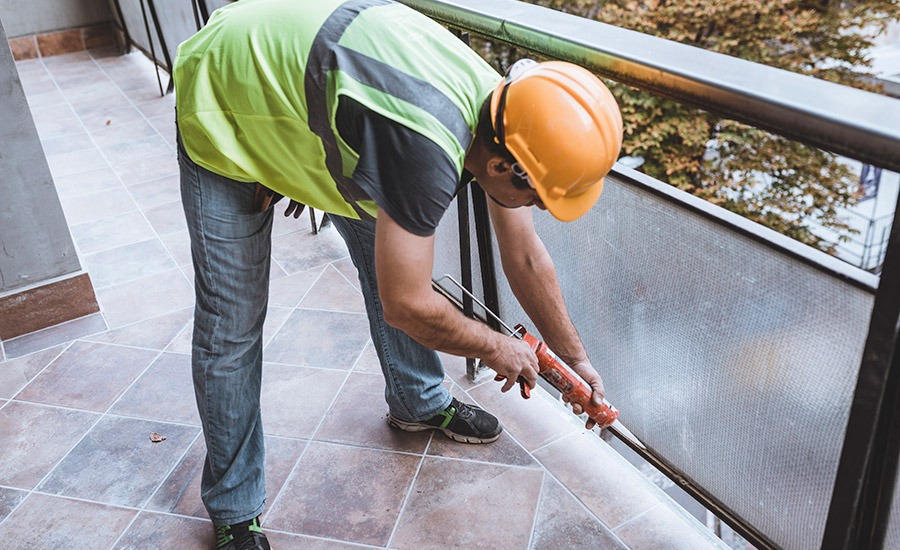In modern construction, the demand for materials that provide strong, durable, and flexible bonding is higher than ever. Industrial adhesives have become a cornerstone of building projects, offering solutions that go beyond traditional mechanical fastening. From structural anchoring to sealing joints, adhesives improve performance, reduce installation time, and enhance the longevity of construction assemblies.
This article explores key types of industrial adhesives, like anchoring epoxy, silicone sealant, and polyurethane sealant, and how joint sealants and fillers complement these materials. Understanding their applications and benefits helps contractors, engineers, and architects make informed decisions that optimize construction quality.
What Are Industrial Adhesives?
Industrial adhesives are specialized bonding agents designed to join materials in demanding environments. Unlike everyday glues, these adhesives are formulated to withstand heavy loads, extreme temperatures, chemical exposure, and dynamic stresses typical in construction settings.
They provide:
- Superior adhesion to a wide range of substrates (concrete, metal, wood, plastics)
- Flexibility to accommodate thermal expansion and movement
- Resistance to moisture, chemicals, and UV radiation
Key Types of Industrial Adhesives in Construction
Anchoring Epoxy
Anchoring epoxy is a high-strength adhesive used primarily to secure bolts, rebar, and structural elements into drilled holes in concrete or masonry. It cures to form a rigid, load-bearing bond that can withstand vibration, heavy loads, and environmental stress.
Applications include:
- Securing steel columns and machinery bases
- Repairing cracks with epoxy injection
- Installing dowels and structural reinforcements
Anchoring epoxy is prized for its rapid curing and superior bond strength, ensuring long-term structural integrity.
Silicone Sealant
Silicone sealants are flexible, weather-resistant adhesives ideal for sealing joints and gaps where movement occurs. Their elasticity allows them to accommodate building movement without cracking or losing adhesion.
Typical uses:
- Sealing window and door frames
- Expansion joints in facades
- Waterproofing around plumbing penetrations
Silicone’s resistance to UV light, mold, and temperature extremes makes it a reliable choice for exterior and interior applications.
Polyurethane Sealant
Polyurethane sealants combine strong adhesion with excellent abrasion resistance and elasticity. They bond well to concrete, wood, and metals, and are paintable, offering aesthetic flexibility.
Common applications:
- Sealing expansion joints in concrete slabs
- Waterproofing and sealing roofing elements
- Industrial flooring joints
Their durability under mechanical stress and chemical exposure makes polyurethane sealants a preferred option in heavy-duty environments.
Joint Sealants and Fillers: Complementing Industrial Adhesives
Joint sealants and fillers are essential for maintaining the performance and appearance of construction joints. They prevent water ingress, accommodate thermal expansion, and reduce noise and vibration transmission.
Used alongside industrial adhesives, sealants and fillers:
- Enhance waterproofing systems
- Extend structural life by preventing corrosion and decay
- Provide fire resistance and air sealing
Choosing compatible sealants ensures seamless performance and durability.
Benefits of Using Industrial Adhesives in Construction
- Improved Structural Integrity: Adhesives like anchoring epoxy create strong bonds that distribute loads evenly and reduce mechanical fastener failures.
- Enhanced Flexibility and Movement Accommodation: Silicone and polyurethane sealants absorb stresses from thermal expansion and building movement, preventing cracks.
- Faster Installation: Adhesives often simplify assembly and repair processes, reducing labor time and costs.
- Corrosion Resistance: Bonded joints are less prone to corrosion compared to mechanical fasteners.
- Versatility: Industrial adhesives bond a wide variety of substrates, enabling innovative design and material combinations.
Best Practices for Using Industrial Adhesives
- Surface Preparation: Clean, dry, and roughened surfaces maximize adhesion.
- Correct Adhesive Selection: Match the adhesive properties with substrate type, environmental exposure, and mechanical requirements.
- Follow Manufacturer Guidelines: Proper mixing, application thickness, and curing times are crucial for performance.
- Safety Precautions: Use appropriate PPE and ventilation during application.
Why Choose Quality Brands Like Fospak?
Leading suppliers such as Fospak offer a comprehensive range of industrial adhesives and sealants engineered for Pakistan’s climate and construction demands. Their products undergo rigorous testing and meet international standards, ensuring reliability and technical support throughout your project lifecycle.
Industrial adhesives are transforming construction by providing robust, flexible, and durable bonding solutions. From the high-strength anchoring epoxy that secures critical structures to versatile silicone and polyurethane sealants that protect and seal joints, these materials improve building performance and lifespan.
Coupled with quality joint sealants and fillers, industrial adhesives form an essential toolkit for modern construction challenges. Investing in the right adhesives and applying them correctly ensures safer, stronger, and longer-lasting structures.

